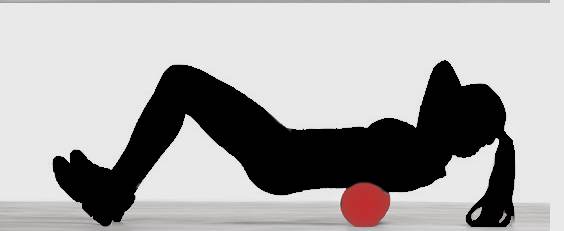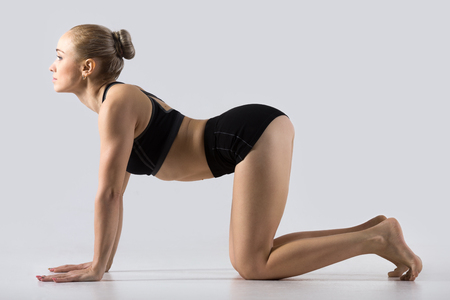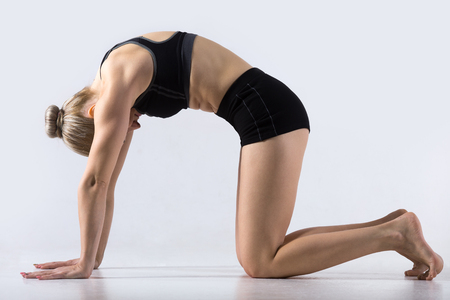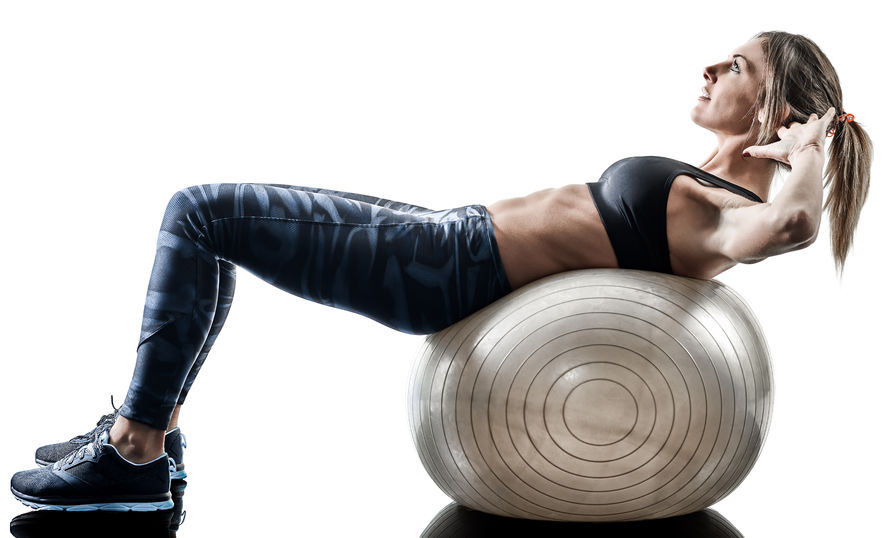Relieve Mid-Back Discomfort: Top Exercises for a Healthier Mid Thoracic Spine

Are You Suffering from Persistent Mid-Back Pain?
Persistent mid-back pain can be a troubling experience, but effective exercises tailored to alleviate this discomfort may offer relief.
Understanding the Culprit: Rounding of the Thoracic Spine
Mid-back pain often stems from the rounding of the thoracic spine, a region closely associated with such discomfort. This curvature places undue pressure on the ligaments, tendons, muscles, and joints in the mid-back area.
The Role of Daily Posture:
Your daily posture plays a significant role in mid-back pain. Prolonged periods of sitting at work can subject the joints, muscles, tendons, and ligaments in your mid-back to extended stretching, leading to increased pressure and discomfort.
The Ultimate Guide To Thoracic Disc Herniation Exercises for Pain
Identifying the Sources of Pain
Mid-back pain typically arises from two primary sources. Firstly, tightened muscles and tendons can constrict veins and arteries in the affected area, impeding blood flow to the muscles. Secondly, pain receptors activate when muscles, tendons, and ligaments undergo excessive stretching.
The Cumulative Effect
Over time, the cumulative stress can cause disc protrusion, turning what initially might have been minor irritation into persistent and resistant pain. The key to relief lies in reversing the curve of your mid-back, allowing your discs and surrounding tissues to return to their natural position with minimal stretching.
Imagine Bending Your Finger Backwards
Imagine bending your finger backwards to its maximum extent. Initially, you may feel a stretch and mild discomfort. Prolong the stretch for an extended period, and the discomfort intensifies. While replicating this action is not advisable, this brief demonstration underscores the impact of prolonged stretching.
Exercises to Alleviate Mid-Back Discomfort
To alleviate mid-back pain and foster a healthier spine, it is essential to implement exercises that target the reversal of the thoracic spine curve. Stay tuned for a closer look at specific mid-back pain exercises designed to enhance your overall well-being.
Reversing Your Thoracic Curve For Mid Back Discomfort
Here are a few of the best mid-back pain exercises that help most people.
#1 Foam Roll Thoracic Curve Reverse: Posture Corrector Exercise

Foam roll extensions are an excellent exercise for addressing mid-back pain and promoting spine flexibility. Here’s a step-by-step guide on how to perform foam roll extensions:
- Positioning:
- Begin by placing a foam roller horizontally on the ground.
- Sit in front of the foam roller with your knees bent and feet flat on the floor.
- Ensure the foam roller is positioned at the base of your mid-back.
- Support Your Head:
- Interlace your fingers and cradle your head gently, supporting it with your hands.
- Engage Core Muscles:
- Tighten your abdominal muscles to stabilize your core.
- Lean Back:
- Slowly lean back over the foam roller, allowing it to roll up your mid-back.
- Maintain control over the movement to avoid any sudden or jerky motions.
- Extend Over the Roller:
- Extend your spine over the foam roller, focusing on arching your mid-back.
- You should feel a gentle stretch along the thoracic spine.
- Hold and Breathe:
- Hold the extended position for a few seconds, emphasizing controlled breathing.
- Return to Starting Position:
- Gradually roll back to the starting position, ensuring a smooth and controlled movement.
- Repeat:
- Perform the foam roll extensions for a specific number of repetitions or as part of your regular stretching routine.
Tips:
- Customize the intensity by adjusting the placement of the foam roller. Moving it higher or lower along the mid-back can target different areas.
- If you experience discomfort or pain, reduce the intensity of the stretch or consult with a healthcare professional.
Incorporating foam roll extensions into your routine can contribute to improved mid-back mobility, reduced stiffness, and enhanced overall spine health.
Cat Cow To Loosen The Thoracic Spine: Posture Corrector Exercise


The Cat-Cow Pose, often used in yoga, is a gentle and effective stretch that helps improve flexibility and mobility in the spine. This pose is often used as part of a warm-up or in a sequence to promote spinal health and flexibility. Here’s how to do it:
- Starting Position (Neutral Spine): Begin on your hands and knees in a tabletop position. Your wrists should be directly under your shoulders, and your knees under your hips. Keep your spine in a neutral, flat position, with your head aligned with your spine.
- Cow Pose (Inhale): As you inhale, arch your back, dropping your belly towards the floor. Lift your tailbone upward, tilt your pelvis forward, and gently lift your head to look forward or slightly upward. Your spine should form a concave curve, resembling a “U” shape.
- Cat Pose (Exhale): As you exhale, reverse the movement. Round your back, tuck your chin towards your chest, and tuck your pelvis under, as if you’re trying to touch your belly button to your spine. This creates a convex curve in your spine, resembling a “C” shape. Your tailbone should point downwards.
- Repeat: Continue to flow between the Cow Pose (Inhale) and the Cat Pose (Exhale). Inhale as you arch your back and look forward, and exhale as you round your back and tuck your chin. Coordinate your breath with the movements, allowing each inhale and exhale to guide the transition.
- Duration: Repeat this flow for several breath cycles, gradually increasing the range of motion in each pose. You can do it as many times as you like, typically for about 5-10 breath cycles.
Wall Stretch To Reverse Your Thoracic Spine: Posture Corrector Exercise
Will put pictures up in a few days.
- Stand 2ft or 60-70 cm from the wall. If you are taller than 5 foot 6 inches (168 cm) then you need to stand further away.
- Face the wall and put your hands high up on the wall.
- Breathing in.
- Arch your mid back backwards and your neck is also bending backwards and hold your breath.
- Breathe out and stand straight again.
Tell us what you think in the comments below and like us on Facebook. This Toronto Downtown Chiropractor will answer all questions in the comments section.
Related Categories: Back Pain, Hip, Mid Back Pain, Neck Pain, Posture, Shoulder





